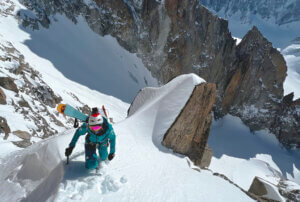In the shadow of the towering Mont-Blanc massif, carving out new lines is a feat that demands not only unrivalled skill but also a daring imagination. Fay Manners and her ski partner, Tom Lafaille, embarked on a journey to defy the limits of ski mountaineering by opening a new descent on Aiguille d’Argentière. This technical endeavour, named “Stratonspherique”, required meticulous planning, profound knowledge of alpine environments, and a boldness to navigate terrain where the margins between success and peril are razor-thin. Their quest illustrates the sheer complexity and challenge of introducing new chapters to the storied slopes of the Alps, where every turn holds the weight of history and every line a testament to human audacity.
The Creative Quest for Uncharted Slopes in Chamonix
In the ever-challenging terrains of Chamonix, finding untouched lines for skiing is akin to discovering hidden treasures. Fay Manners shared insights into the innovative spirit driving the first ski descent on Aiguille d’Argentière, a venture marked by creativity and a deep connection with the mountain environment. Manners and her partner, Tom, delved into this project with a shared passion for ski mountaineering, an adventure that promises purity and remoteness in the heart of the mountains.
The rarity of unskied lines in Chamonix fueled the inception of this unique descent. “It’s quite difficult to find new lines in Chamonix,” Manners explained, highlighting the area’s dense history of ski explorations. The duo’s desire to ski directly from a summit added an extra layer of allure to the project, elevating it beyond the conventional ski routes typically ending in cols or dead ends.
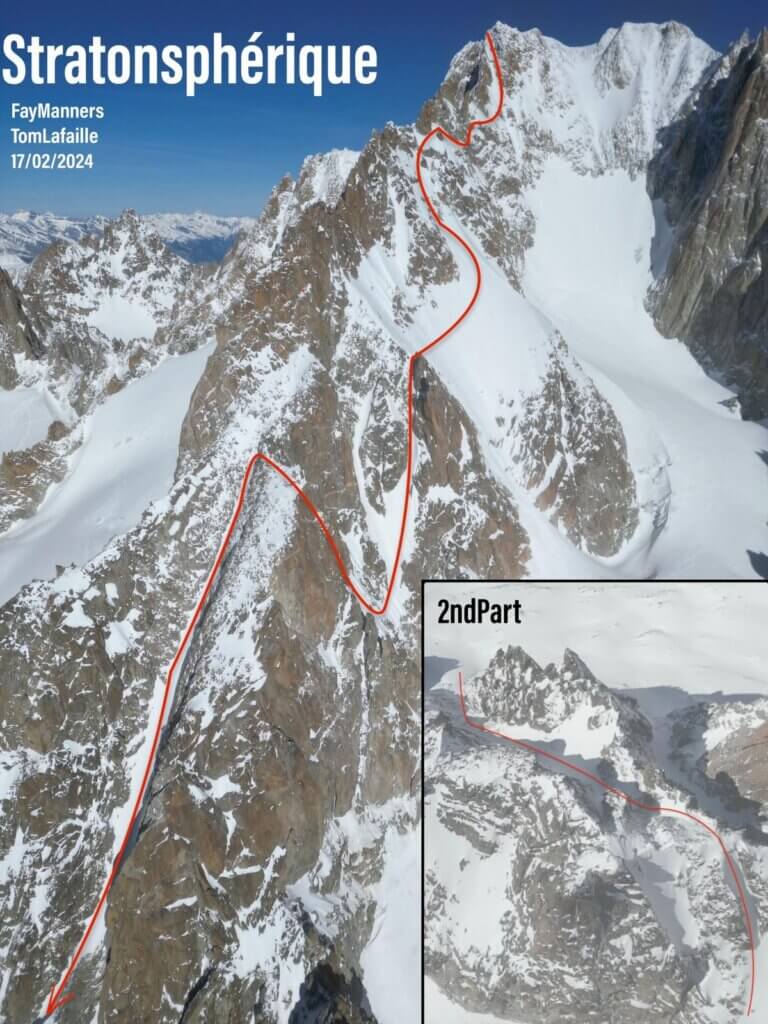
Tom’s discovery of a potential line on Aiguille d’Argentière sparked the project. He presented it to Manners with a blend of optimism and caution, aware of the challenges posed by the rocky and exposed terrain. “It felt like a big objective,” Manners recalled, emphasizing the necessity of on-site navigation and reliance on their collective mountaineering instincts to negotiate the route’s complexities.
This adventure was not just about linking two bottom couloirs but also engaging with the mountain’s rugged topography, including exposed traverses and downclimbing sections. Manners remarked on the beauty and the challenge of the descent, highlighting how it required a blend of skiing prowess and mountaineering skills. The route, named after the Charlet-Straton arête, represented a significant achievement in Chamonix’s skiing history—a new line in a region where innovation on the slopes is increasingly challenging.
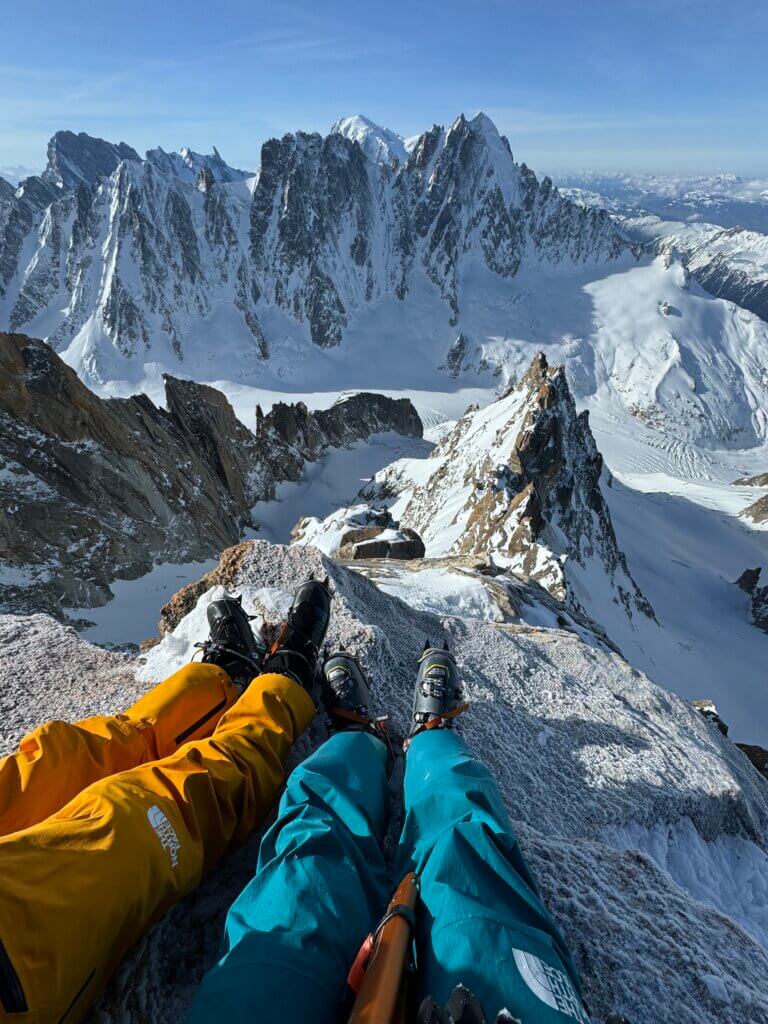
Manners and Lafaille’s exploration is a testament to the evolving narrative of ski mountaineering in the Alps. It underscores a continuing quest for creativity among skiers and the joy of unveiling new routes. Their journey through Aiguille d’Argentière’s untouched snow not only added a new chapter to Chamonix’s storied slopes but also celebrated the spirit of adventure that defines the mountaineering community.
Charting the Unseen: The Stratonspherique Descent on Aiguille d’Argentière
In a feat of mountaineering and skiing precision, the Aiguille d’Argentière witnessed a first-of-its-kind descent named “Stratonspherique,” located in the heart of Chamonix. This endeavour not only showcased the sheer will and skill of the adventurers but also highlighted their deep respect for the alpine environment. Setting off before dawn on February 17th from the Grands Montets car park, the team embarked on a challenging ascent that promised no aid from mechanical lifts, covering nearly 3,000 meters to reach their starting point on the mountain.
The journey to the west summit of Aiguille d’Argentière began in earnest, with the climbers navigating the Glacier du Milieu. By 10:30 am, they had reached the summit, standing at 3,900 meters above sea level, ready to undertake a descent that would test their limits. The route down involved traversing rocky lines, skiing exposed terrain above cliffs, and finding the perfect snow conditions to carve a path where none existed before.
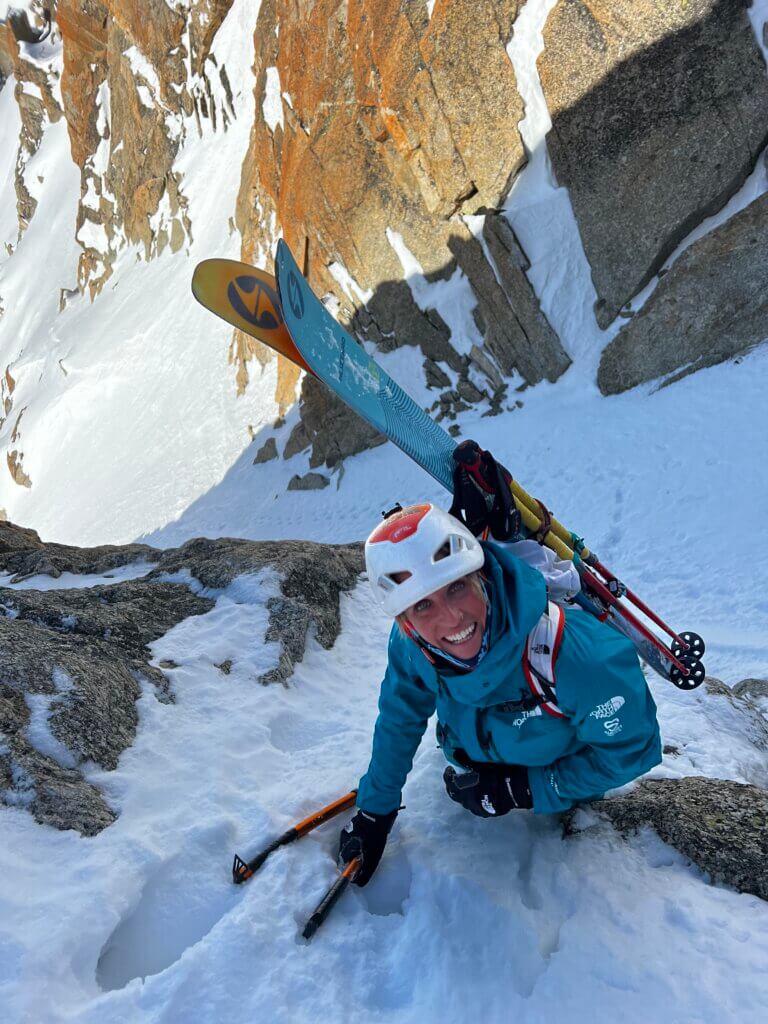
The descent demanded a mix of technical skills, including abseiling, down climbing, and navigating through complex terrain. The first section alone, characterized by its intricate landscape and variability in snow coverage, required significant time and care. However, the effort was rewarded with exceptional skiing conditions, particularly in the middle section, where a snowy shoulder offered pristine snow against a backdrop of breathtaking alpine vistas.
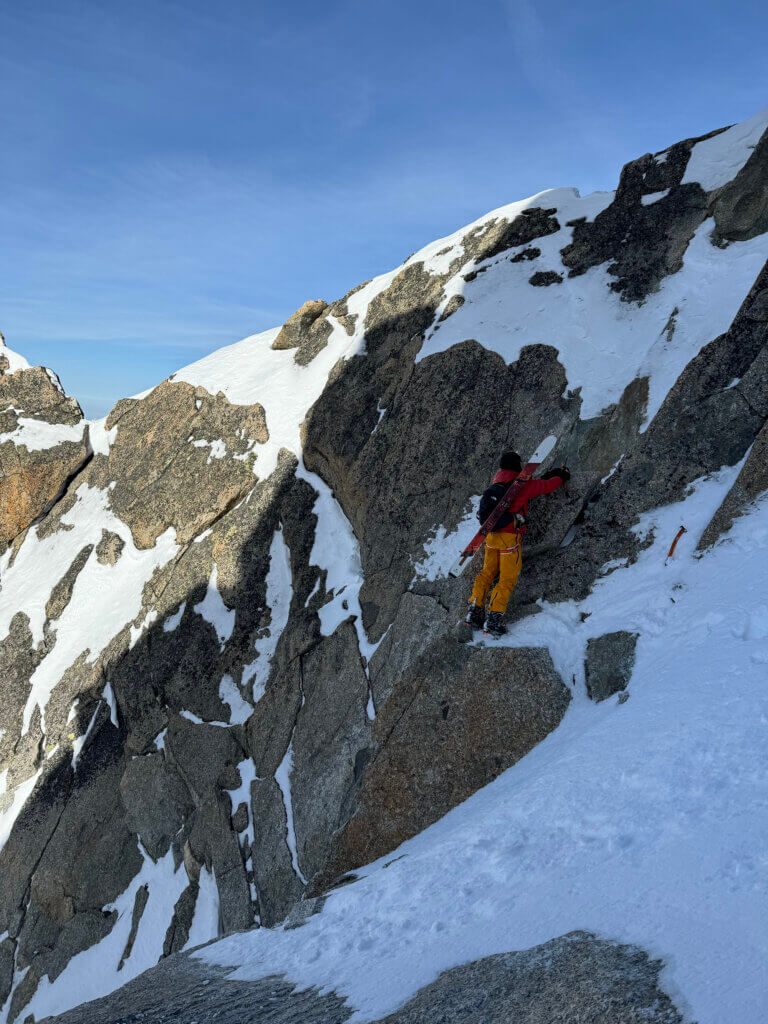
The culmination of their journey was marked by skiing through two lower couloirs, each presenting its unique challenges and thrills. The first, narrow and demanding precision in every turn, contrasted sharply with the second, which allowed for more fluidity and speed. Throughout the adventure, the team adhered to a pure alpinist approach, minimizing their environmental impact by leaving no trace behind, using a 30-meter rope for necessary abseils without leaving any equipment on the mountain.
Timing played a crucial role in their successful descent. The team carefully planned their route to ensure they skied certain sections when the snow conditions were most favourable. They waited for the sun to soften the snow on the upper sections, ensuring safer and more enjoyable skiing. The lower couloirs received sunlight later in the day, softening just in time for their descent, which prevented them from skiing on overly icy or hard-packed snow.

This monumental 14-hour day, from the dark early hours in the car park to their return as the sun set, was a testament to their commitment and passion for mountain sports. The Stratonspherique descent on Aiguille d’Argentière was not just a physical journey but a profound interaction with the natural world, pushing the boundaries of what is possible in ski mountaineering while respecting the sanctity of the untouched alpine environment.
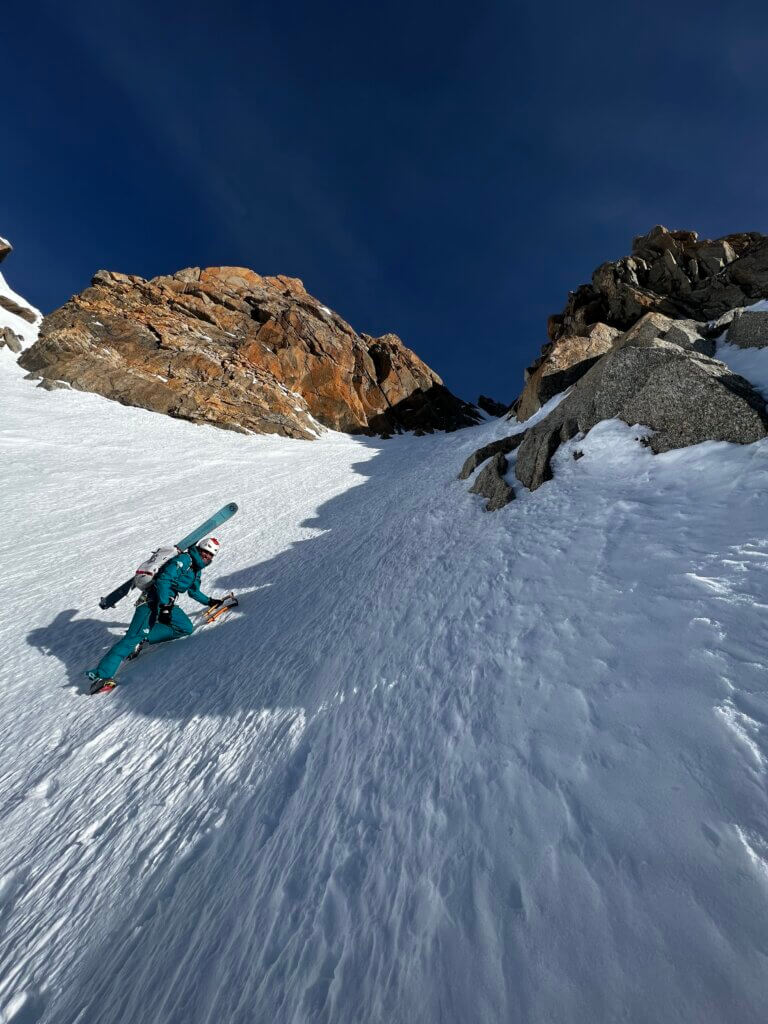
Pioneering New Paths in the Alps: The Essence of Innovation in Ski Mountaineering
The quest to open a new ski line in the Alps is an endeavour that embodies both the audacity and the creativity of the ski mountaineering community. Fay Manners, reflecting on the journey to chart the first descent on Aiguille d’Argentière, sheds light on what it truly means to pioneer a route where none existed before. This narrative is not merely about skiing; it’s a testament to the spirit of exploration that thrives within the heart of every outdoor enthusiast.
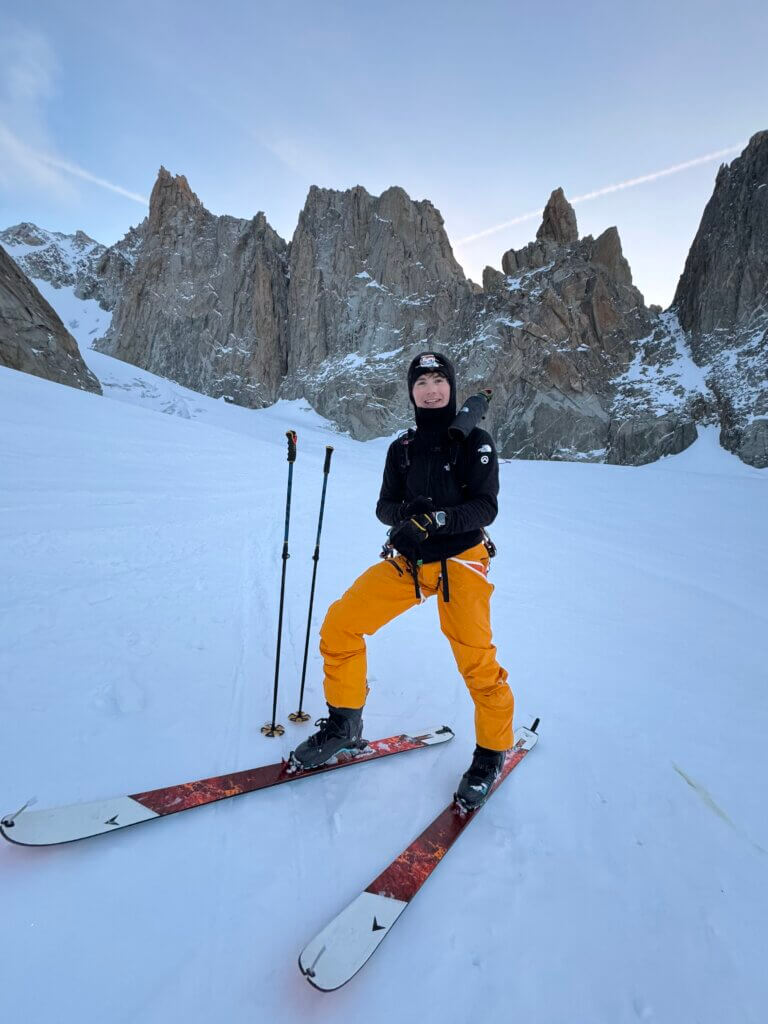
The newly opened “Stratonspherique” line is a prime example of such innovation, born from the necessity to think beyond the conventional and the visible. Manners describes the line as “a very exposed, committing line,” highlighting the immense challenge and skill required to envisage and then execute a descent on such a daunting terrain. The essence of this creativity lies in the ability to see potential where others see impossibility. “It’s almost like an unrealistic line that doesn’t look possible,” Manners explains, emphasizing the optimism needed to embark on such an ambitious project.
Secrecy, as it turns out, plays a critical role in the planning and execution of such pioneering ventures. The desire to be the first to descend a new line means projects are often kept under wraps until their successful completion. Manners and her skiing partner, Tom Lafaille, chose not to disclose their plans to anyone else, safeguarding the uniqueness of their endeavour until it was realized. This approach underscores a common practice within the steep skiing community, where the novelty of discovery is cherished and protected.
The partnership between Manners and Tom is highlighted as a critical factor in the success of their project. Their combined skills, experience, and mutual trust allowed them to tackle a line that was as much about mountaineering as it was about skiing. “It involves a lot more than just the skiing,” Manners notes, detailing the extensive climbing, abseiling, and traversing that the line demanded. This collaboration speaks to the heart of ski mountaineering, where the sum of individual strengths creates the possibility to achieve what might seem insurmountable.
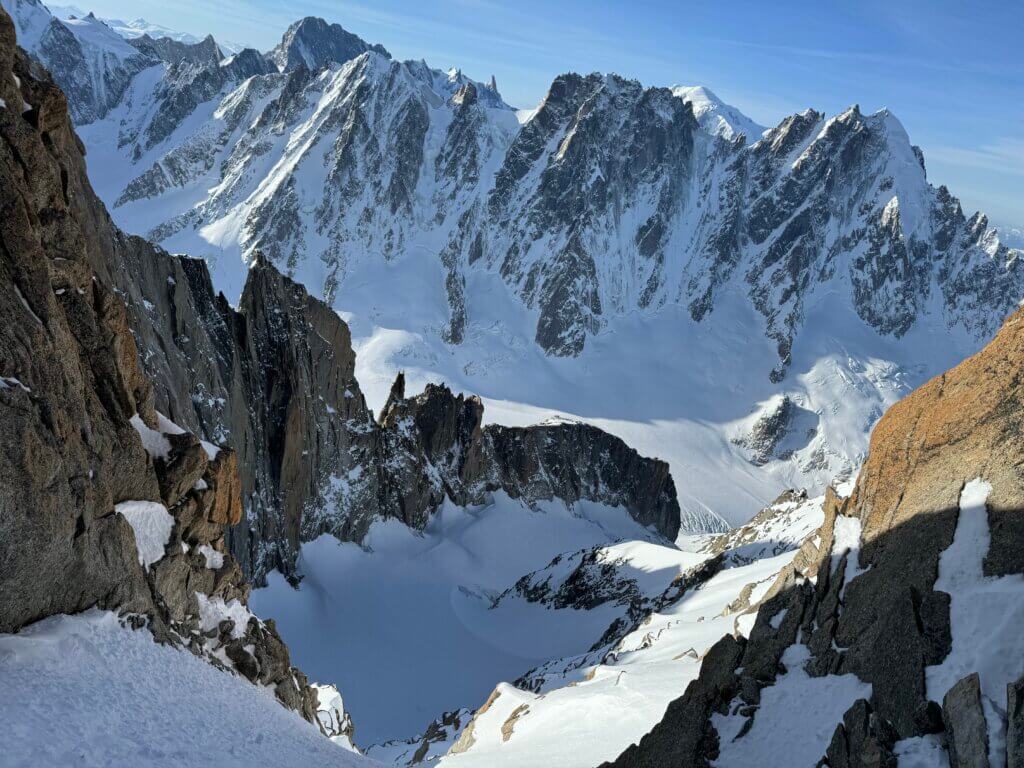
The exploration of new lines in the Alps, whether on the French side or beyond into Italy and Switzerland, remains a formidable challenge. The region, well-trodden by generations of skiers and mountaineers, requires an exceptional level of creativity and determination to uncover new possibilities. Manners’ account of opening a new line in this iconic terrain serves as a compelling narrative of adventure, partnership, and the unending pursuit of the unexplored.

